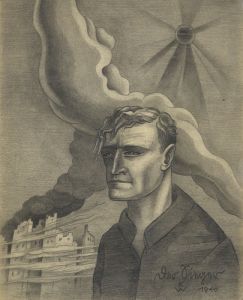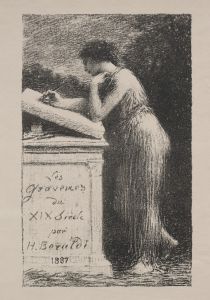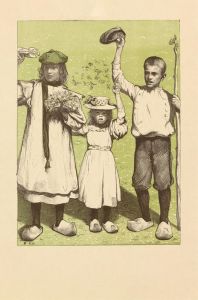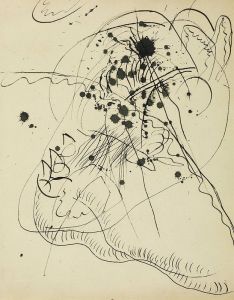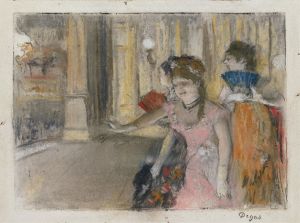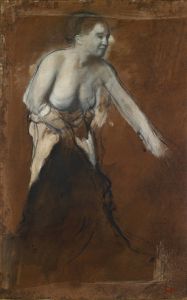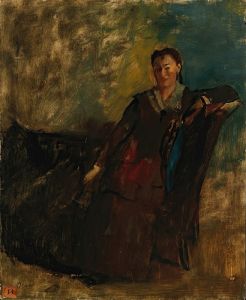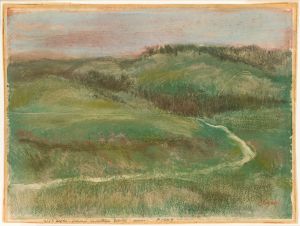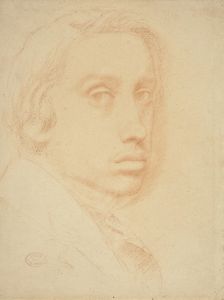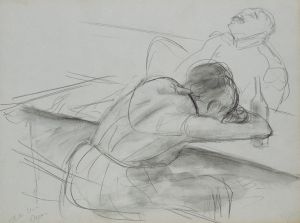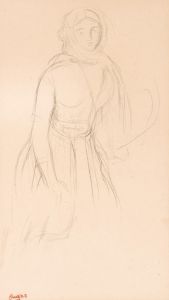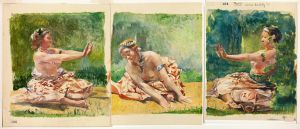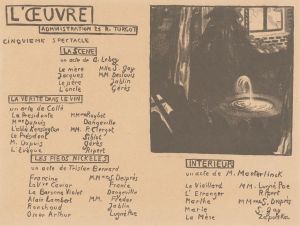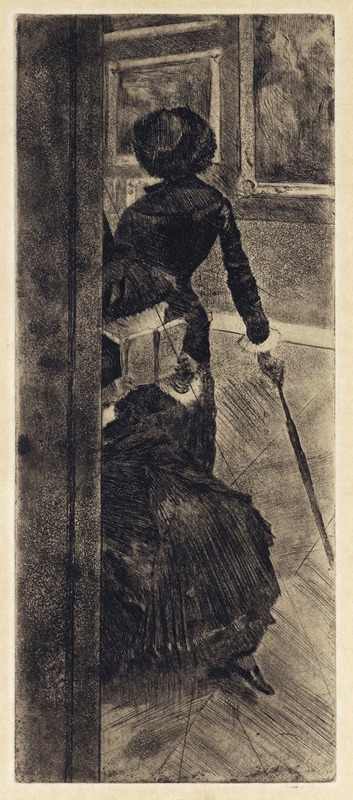
Mary Cassatt at the Louvre; The Paintings Gallery
A hand-painted replica of Edgar Degas’s masterpiece Mary Cassatt at the Louvre; The Paintings Gallery, meticulously crafted by professional artists to capture the true essence of the original. Each piece is created with museum-quality canvas and rare mineral pigments, carefully painted by experienced artists with delicate brushstrokes and rich, layered colors to perfectly recreate the texture of the original artwork. Unlike machine-printed reproductions, this hand-painted version brings the painting to life, infused with the artist’s emotions and skill in every stroke. Whether for personal collection or home decoration, it instantly elevates the artistic atmosphere of any space.
"Mary Cassatt at the Louvre; The Paintings Gallery" is a notable pastel drawing created by the French artist Edgar Degas around 1879-1880. This artwork is significant as it captures the American painter Mary Cassatt, who was a close friend and colleague of Degas, in a moment of contemplation at the Louvre Museum in Paris.
Edgar Degas, born in 1834, was a prominent figure in the Impressionist movement, although he preferred to be called a Realist or Independent. His works often focused on scenes of modern life, including ballet dancers, laundresses, and women at their toilette. Degas was known for his innovative use of perspective and his skillful draftsmanship, which is evident in this particular piece.
Mary Cassatt, born in 1844, was an American painter and printmaker who spent much of her adult life in France. She was one of the few women to exhibit with the Impressionists and was known for her depictions of the social and private lives of women, with a particular emphasis on the intimate bonds between mothers and children. Cassatt and Degas shared a mutual respect and influence on each other's work, and their friendship is well-documented.
In "Mary Cassatt at the Louvre; The Paintings Gallery," Degas portrays Cassatt in the act of studying art, a reflection of her dedication to her craft. The drawing shows Cassatt standing with a friend, often identified as her sister Lydia, who is seated beside her. Both women are dressed in the fashion of the time, with Cassatt holding a fan and Lydia appearing to be engaged in conversation or observation.
The setting of the Louvre Museum is significant, as it was a central hub for artists and art lovers in Paris. The museum's vast collection provided endless inspiration and learning opportunities for artists like Cassatt and Degas. The choice of the Louvre as the backdrop underscores the intellectual and cultural environment in which both artists thrived.
Degas' use of pastel in this drawing is noteworthy. Pastel allowed for a softness and immediacy that suited his interest in capturing fleeting moments and the subtleties of light and color. The medium also enabled Degas to experiment with texture and layering, adding depth to the composition.
"Mary Cassatt at the Louvre; The Paintings Gallery" is a testament to the camaraderie and mutual influence between Degas and Cassatt. It also highlights the role of women in the art world during the late 19th century, a time when female artists were beginning to gain more recognition and opportunities, albeit still facing significant challenges.
Today, this drawing is part of the collection at the Metropolitan Museum of Art in New York. It remains an important piece for understanding the dynamics of the Impressionist movement and the personal relationships that shaped it. The artwork not only captures a moment in the lives of two influential artists but also serves as a historical document of the artistic milieu of the time.





